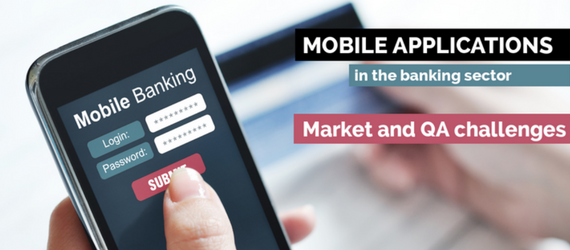The arrival of mobile banking applications
Like the retail industry before, the rise of mobile applications is rapidly changing the status quo of the banking sector. Traditional banks are being forced to innovate or they will be made obsolete by new entrants who are moving towards a "digital" user experience through mobile applications.
Today, traditional banks benefit from a large customer base and this is one of the main reasons why users of bank apps still outnumber users of fintech.
But, if you look at behaviors on the other side of the Atlantic, users rate FINTECH apps better than their traditional competitors. This is the reflection of the underlying trend of successful UX / UI research. An example of this is success is the Venmo app, which doubled the number of its users between 2015 and 2016 (source: AppAnnie).
As for Europe, fueled by the arrival of young consumers on the market, mobile banking is accelerating its growth. For example, France has doubled its total number of mobile banking sessions in two years. This increase can be explained both by the increase in the number of users and by the average number of sessions per user.
So what is the future for retail banks in Europe?
Retail banks will have to embrace the new consumer demands of mobile applications, especially in terms of commitment, and reconsider their strategy of physical networks.
The use of mobile banking applications has created a simple, efficient, 24-hour service expectation. For example, Société Générale could eliminate 20% of its branches by 2020. Société Générale states that the percentage of clients who visit a branch at least once a month is only 42 % as of 2015 (Source: Le Monde).
The stakes are enormous. There is a real paradigm shift. The Center for the Study of Financial Innovation (CSFI) in New York and PwC published a study in 2015 that identifies the risks and challenges for on a panel of 672 banks, regulators and analysts in 52 countries (Banking Banana Skins). In the top 5, we find the technological risk in fourth place.
Among the most pressing concerns, not investing appropriately in secure and agile systems that can improve digital and mobile banking will lead to significant losses. Another concern is the increasing risk of cyber attacks (which is the fifth highest risk 5).
According to Alexander Campbell, editor-in-chief of Operational Risk & Regulation Magazine, CTOs at banks face the inherited burden of mergers and are having to manage multiple IT systems. Added to this is the arrival of innovative pure-players, who are able to provide customers with a transparent and affordable experience.
Retail banks will therefore have to reinvent their digital models and, above all, focus on customer engagement. Recall that 26% of installed applications are deleted after the first use and 58% of users who stop using an app do so within 30 days. The churn rate is extremely high and fast.
Moreover, a bad user experience will have a direct impact on the reputation of the Bank as social media provides a powerful platform for clients to express themselves. At the same time, 82% of mobile banking users are satisfied with their bank, while non-users of apps are only 71% satisfied.
Efficient apps have a significant positive effect on customer satisfaction and, by extension, on retention. QA has never been more important, especially in this sector.
What are the challenges of testing banking applications?
Running a test of a mobile application is affected by several factors: the differences that exist from one network to another (throughput, technology), from one country to another, devices, OS and of course the habits of the mobile users themselves.
The testing challenges:
- Be able to evolve the application with new hardware releases.
- Be able to adapt to rapid changes in UX
- Provide real-time service despite potential lag on some network
- Provide a secure service while providing a fluid user experience
It is essential to test on a variety of devices with users who have not been involved in development. This will ensure realistic test results and uncover a greater variety of bugs. Such a test will also allow you to measure the User Acceptance: the user’s understanding of the ergonomics and user path.
In the case of an application used on an international scale, it may be worth investigating through crowdtesting, where testers are dispatched throughout the world.
Finally, testing an application frequently, especially during new releases, makes it possible to verify its non-regression in technical terms and user acceptance.
If you're interested in that kind of topics, please do not hesitate to download our white paper on the evolution of digital banking and QA testing challenges it presents.




